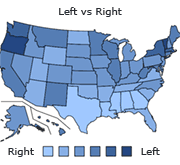Introduction to Psychology (part 1a)

Psychology deals with many different things such as emotions, learning, education, desires, and even how we think. For anyone who has a passion for Psychology, this quiz may not be a good quiz to see if you are a good candidate for the science; but to test your already acquired knowledge. Good luck taking the quiz! I look forward to reading any comments you leave at the end.
With that being said; this quiz is a very good quiz for anyone studying Psychology right now and who wants to test their knowledge for an upcoming quiz or test. This quiz is based off an Introduction course. The questions here are based off the textbook "Psychology" (second edition) written by Daniel Schacter Ph.D, Daniel Gilbert Ph.D, and Daniel Wegner Ph.D. Published by Worth Publishers. The questions, however, should apply to all introductory courses.

